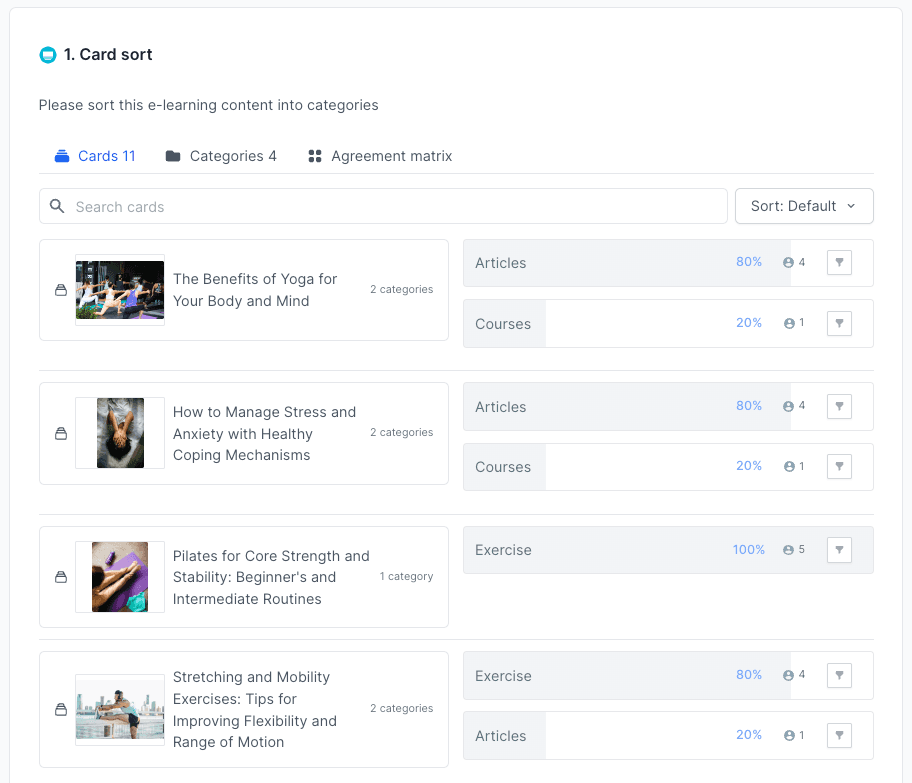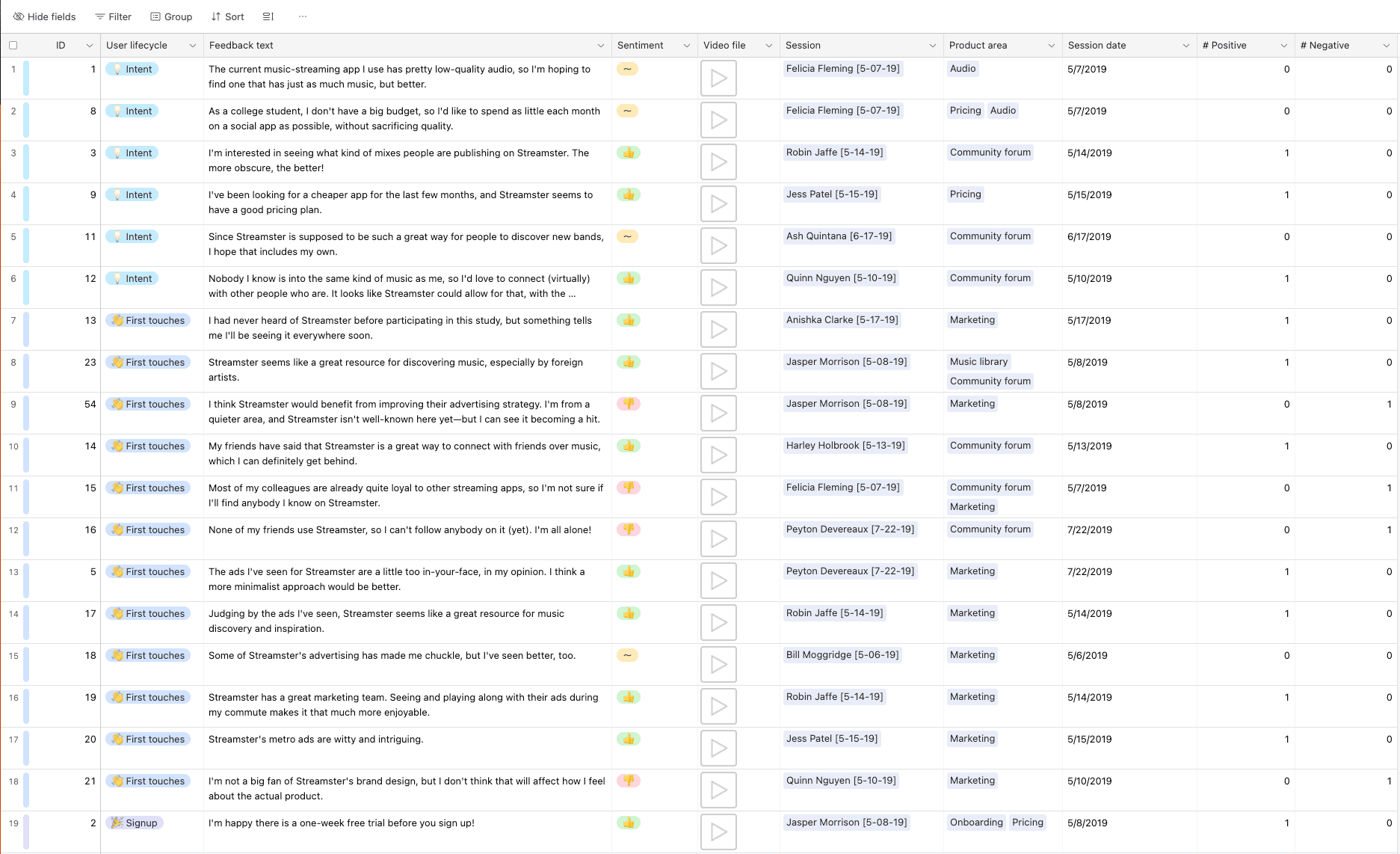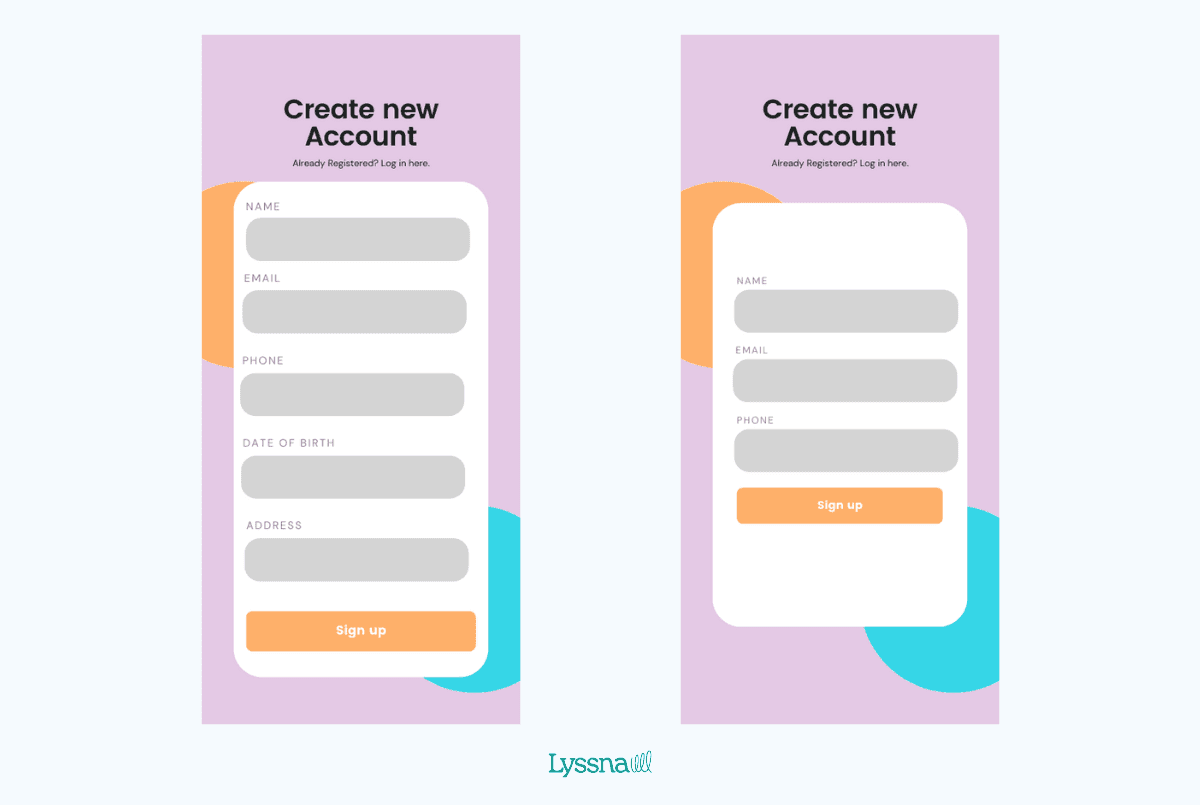14 Jul 2025
|14 min
How to get buy-in for UX
We share seven strategies for gaining stakeholder buy-in for UX research, with expert tips and a business case template included.

Getting buy-in for user experience (UX) research can be a tough nut to crack. You may encounter stakeholders who don’t fully grasp the advantages of UX, or who are hesitant to invest their limited resources in it. But fear not!
In this article, we explore some common challenges you might face when seeking stakeholder buy-in for UX research. We’ve also gathered insights from UX experts on how to overcome these obstacles. You’ll learn about communicating the value of UX, aligning UX research with business objectives, providing education and training, involving stakeholders, and more.
Plus, we also share a customizable template you can use to make a business case for adopting a UX research tool like Lyssna at your organization.
These strategies are designed to address the most common obstacles organizations face: lack of understanding, resource constraints, resistance to change, tight budgets, time pressures, stakeholder assumptions, insufficient data, and misconceptions about UX research.
Below are the seven proven strategies we'll explore in detail throughout this article:
Strategy | Key actions | Expected outcome |
|---|---|---|
Communicate the value of UX | Tailor messaging, highlight ROI, address concerns | Stakeholders understand UX benefits |
Align with business objectives | Connect UX to business goals, use relevant metrics | UX seen as business-critical |
Use data and testing | Present qualitative/quantitative evidence | Data-driven decision making |
Provide education and training | Workshops, documentation, knowledge sharing | Increased UX literacy organization-wide |
Involve stakeholders in UX process | Include in research, regular check-ins | Stakeholder ownership and engagement |
Conduct a pilot project | Small-scale research with clear objectives | Tangible proof of UX value |
Identify UX champions | Find advocates across departments | Internal support network for UX |
Start building your case
Demonstrate UX value to stakeholders with real user insights. Try Lyssna free to gather compelling research data.
Communicate the value of UX
This might be an obvious one, but the foundation of gaining stakeholder buy-in lies in effectively communicating the tangible value that UX research brings to your organization. This isn't just about explaining what UX is – it's about demonstrating how it directly impacts business success.
Tailor your message and approach
When communicating the value proposition of UX research, tailor the message to the specific needs and interests of your stakeholders. This might include using business-oriented language, providing tangible examples of past successes, and relating UX research to specific organizational objectives.
According to Zack Naylor, UX researcher and co-founder of Aurelius, overcoming challenges requires a tailored approach. “Some of the most common challenges I’ve encountered when trying to get buy-in for UX research were hearing people say ‘we don't have the budget’, ‘we don't have the time’, or hearing things like ‘we already know what our customers want’.”
The solution? “Being very scrappy and using tools and techniques already available to you typically help for getting buy-in where budget is a concern.”

Highlight the ROI of UX
Highlighting the potential return on investment (ROI) of UX research and its impact on business outcomes can be a good way to gain buy-in.
James Wilkinson, CEO of Balance One Supplements, shares a good tactic for communicating ROI. “It’s essential to communicate the return on investment derived from UX research and design, and how this ROI impacts the firm’s bottom line. The best practice is to use data to show stakeholders how UX design can help increase revenues and profit margins, reduce costs, and/or save time for the company.”
Address stakeholder concerns proactively
In addition to the value proposition, it's important to address any concerns that stakeholders may have and actively engage in dialogue to build mutual understanding and trust.

Align with business objectives
Aligning UX research with your company's business objectives is one of the most powerful strategies for gaining stakeholder buy-in. When you frame UX research in the context of how it directly contributes to achieving business goals, stakeholders are more likely to see its value and support it.
Address specific business challenges
Demonstrate how UX research can help solve specific pain points your organization faces. For example, if your product is experiencing negative customer reviews, position UX research as a tool to understand user needs, identify pain points, and uncover improvement opportunities.

Use language and metrics that resonate
Similar to tailoring your message, use business-oriented terminology and data-driven evidence that speaks to your stakeholders' priorities.
Daniel Chabert, CEO and Founder of web and software development agency PurpleFire, shares the importance of using metrics: “To effectively communicate the value of UX to stakeholders who may not be familiar with it, I recommend clearly outlining the benefits of having a user-centered approach. This could include metrics like increased user engagement, improved customer satisfaction and loyalty, higher conversion rates, and ultimately more revenue for the company. It’s also important to provide tangible examples through real-world case studies or stories that illustrate how UX has positively impacted users and businesses alike.”
Zack Naylor also strongly believes in speaking the right language for communicating with stakeholders.
“You MUST learn and speak their language. It’s not their job to know the value of UX, so speak in terms they know and care about. Learn about their job, their responsibilities and who/what they’re accountable for. Then you can discuss how UX principles and techniques actually help them achieve their goals!”
Make clear connections between UX research and business goals
Establish explicit connections between UX research activities and broader organizational strategy, goals, and priorities. This helps stakeholders understand how UX research aligns with the company's vision and contributes to long-term success.

Use data and testing
Using data and evidence is a highly effective strategy for gaining stakeholder buy-in. Objective information supports the need for UX research and validates its potential impact on business outcomes.
Leverage qualitative and quantitative data
Qualitative data, such as user feedback, usability testing results, or user interviews, provides rich insights into user needs, preferences, and behaviors. This data helps stakeholders understand the "why" behind user behaviors and can create compelling stories that highlight UX research value.
Quantitative data, such as user analytics, surveys, or performance metrics, provides numerical evidence of user behavior and pain points. This data helps quantify the impact of UX issues and provides clear rationale for conducting research.

Above: Card sorting results in Lyssna. Quantiative data like this can help to show the impact of UX issues or opportunities for improvement.
Share compelling case studies
Sharing case studies or success stories from other organizations or industries that have benefited from UX research can help show its value and potential impact on business outcomes.
Maria Harutyunyan, co-founder of SEO agency Loopex Digital, often uses case studies as evidence when addressing client concerns: “Some clients are resistant to changing their website’s design or structure, fearing that it may negatively impact their SEO efforts. To overcome this, I present case studies and research demonstrating how UX improvements can lead to better search engine rankings and improved user experience.”
Utilize user stories and testimonials
Share user stories or testimonials that highlight the impact of UX research on user experiences. These create emotional connections with stakeholders and illustrate how research directly impacts user satisfaction, loyalty, and engagement.

Provide education and training
Education is a highly effective way to gain UX buy-in. Sharing knowledge about UX research and its benefits helps address misconceptions and builds stakeholder understanding.
Conduct interactive workshops
Host UX workshops to share the principles and best practices of UX research. These can be virtual or in-person, tailored to different expertise levels, and include presentations, demonstrations, discussions, and hands-on activities.
You can also organize training sessions on specific UX research methods, tools, and techniques to help stakeholders build their knowledge. For example, you could focus on topics like user interviews, card sorting, surveys, and prototype testing.
Lisa Richards, CEO and Creator of the Candida Diet, has found success in her business through UX workshops: “Collaborative workshops are a highly effective way of involving stakeholders in the UX process, and gaining their approval. UX teams should give stakeholders interactive walkthroughs of major research and design activities, such as user journey mapping, persona creation, wireframe development as well as usability testing. Doing this will give the stakeholders a better understanding of user needs and pain points, and how certain design decisions can help fulfill these needs while elevating the user experience.”

Share documentation and resources
Create internal documentation and resources on UX research for stakeholders to learn at their own pace. This includes written guides, video tutorials, templates, and other reference materials. You can make internal resources available through research repository, internal portals, or a shared drive, and communicate updates via your company’s collaboration app, like Slack or Microsoft Teams.
You can also share external resources to help provide further education, such as online courses, books, podcasts, videos, blogs, and curated lists of the best UX design programs.

Above: Make research accessible via a research repository. You can use free tools like Airtable to create your own.
Facilitate peer mentoring and knowledge sharing
Encourage peer mentoring and knowledge sharing among stakeholders to foster a culture of learning and continuous improvement. Establish communities of practice where team members can share experiences, insights, and challenges related to UX research. You can facilitate this through regular meetups, discussions, presentations, or other collaborative activities.
Involve stakeholders in the UX process
When stakeholders actively participate in UX activities, they're more likely to understand and appreciate its value. Direct involvement creates ownership and deeper understanding of the research process.

Invite stakeholders to participate in research
Include stakeholders in UX research activities such as user testing sessions, usability studies, or design reviews. This hands-on experience helps them see firsthand how UX research provides insights into user behaviors and informs data-driven decision making.
“The best way to gain buy-in from stakeholders is to involve them in the design process from the beginning. This way, they’re able to understand the value of UX as well as provide feedback that can help improve UX outcomes.” – James Wilkinson
Schedule regular check-ins and updates
Regular check-ins allow for ongoing communication and engagement with stakeholders, making sure they’re kept informed about the progress of UX research activities, findings, and implications.
For Daniel Chabert, check-ins and updates have been key for gaining stakeholder buy-in.
“Involving stakeholders in the UX process is essential for gaining buy-in as it helps to create a sense of ownership around the user experience. I recommend having regular check-ins throughout the process and involving stakeholders in key decisions related to design and research. I also suggest regularly sharing updates with stakeholders so that they can see the progress made and feel invested in the outcome. This has been effective in gaining buy-in and support for UX initiatives.”
Include stakeholders in participant recruitment
Try involving stakeholders in the participant recruitment process. They can help identify suitable users for research studies, provide access to relevant user groups, or facilitate introductions to potential participants. A bonus is that this helps make sure your research participants represent your target user group.

Conduct a pilot project
Pilot projects are smaller-scale research initiatives that can showcase the value and impact of UX research in a tangible way. By conducting a pilot project, you can give stakeholders concrete evidence of the benefits and value of UX research, which can help in gaining their buy-in and support for future projects.
Define clear objectives and outcomes
Clearly communicate how you’ll conduct the research, what insights you expect to gain, and how those insights will inform decision-making. Clear objectives help stakeholders understand the purpose and potential impact of the pilot.

Choose appropriate methods and tools
Choose research methods that are appropriate for the pilot project and align with stakeholder expectations. Consider methods such as usability testing, user interviews, or surveys, depending on your research goals and resources.
For your pilot project, you could use low-fidelity mockups or prototypes. According to Leizel Laron, UI/UX Designer at ExaWeb, “an effective way to communicate the value of UX to our clients who may not be familiar with the field is to present mockups or prototypes of the proposed design. Through this, clients will have a better visual understanding of the end goal.”
To further support your pilot project, choose a suitable tool. There are various UX research tools available that offer free plans – like Lyssna – which is a great way to get started.

Above: Use low-fidelity mockups or prototypes when conducting a pilot project.
Share your findings and insights effectively
Be sure to share your findings and insights from your pilot project in a clear, concise, and interesting way using data, visualizations, and narratives. Highlight how the research and tools you used provided insights and solutions to address the identified pain points, and how those insights can drive positive changes or improvements.
Identify UX champions
Identifying and cultivating UX champions within your organization is a powerful strategy for gaining stakeholder buy-in. Champions are enthusiastic advocates who can promote UX value to other stakeholders and help create a positive culture around user-centered design.

Find champions across different roles
Champions can emerge from various roles within an organization, including product managers, designers, developers, marketers, or executives. They help create positive UX culture and facilitate buy-in from other stakeholders.
Build relationships and create allies
As Zack Naylor explains: "If you've established a rapport with stakeholders and shown you understand their work and goals, you include them in the process as you work to help them achieve the goals you both agreed to. This creates a vested interest from them and you've gained an ally to further evangelize the need for UX work."
How to make a business case for UX (+ free template)
Making a compelling case for UX is essential for winning over stakeholders. Using a combination of data, storytelling, empathy, and collaboration is a great way to persuade your stakeholders that UX research is essential in achieving your organization's objectives.
If you want to take your case to the next level and secure buy-in for a UX research tool like Lyssna at your company, we’ve got you covered. We’ve created a customizable template that you can use to create a business case for adopting Lyssna at your org. Simply click the link and it will automatically create a copy on your Google Drive. You can then edit the template by adding or removing information to make it more relevant to your company’s needs.
We hope this article and template will help you in creating a culture of user-centered design at your organization. If you ever have any questions or need some advice, please reach out to our friendly team.

Get stakeholder buy-in today
Turn skeptics into UX champions with powerful research results. Start your free Lyssna trial now.
You may also like these articles


Try for free today
Join over 320,000+ marketers, designers, researchers, and product leaders who use Lyssna to make data-driven decisions.
No credit card required






